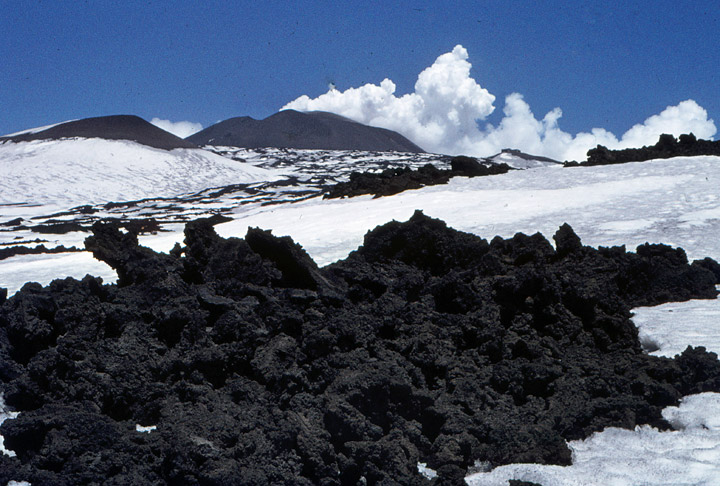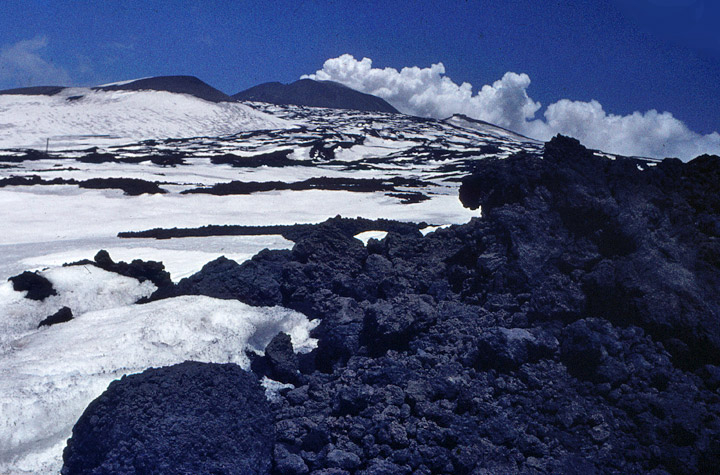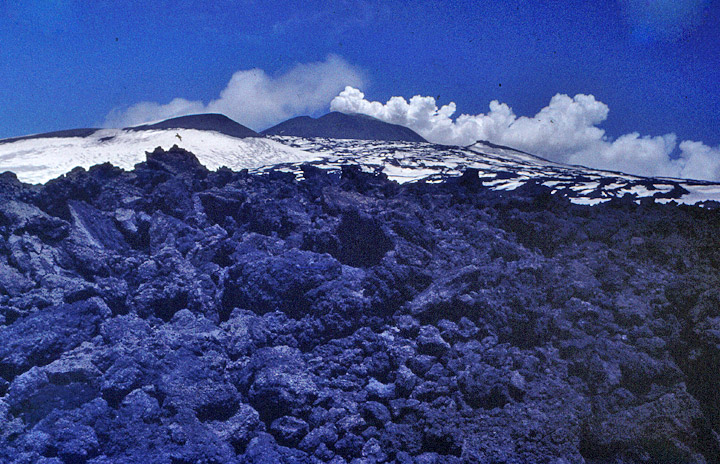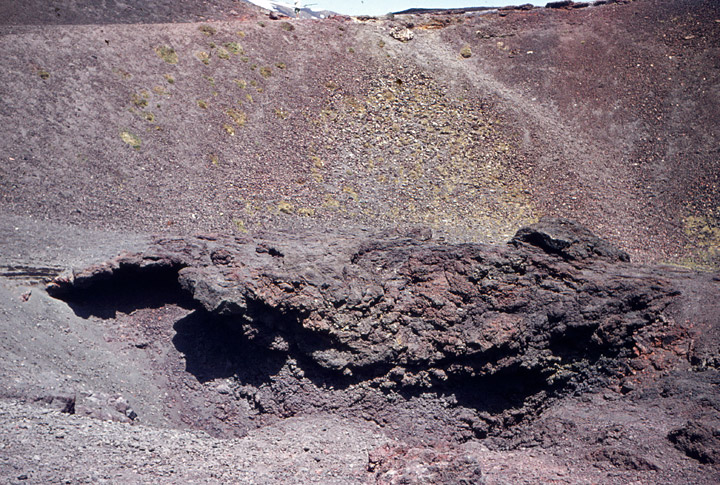

Mount Etna

Mount Etna, with the villages it often threatens in the foreground
Etna, Mount (ancient Aetna), volcano,
southern Italy, on the eastern coast of Sicily. The base of Mount Etna, the
highest active volcano in Europe, covers an area of 1600 sq km (620 sq mi) and
its height, which changes with time, was 3,323 m (10,902 ft) in the late 1990s.
The mountain is an immense cone, with its regularity of outline broken by
fissures and some 250 minor cones. The Valle del Bove, an abyss, 4.8 km (3 mi)
wide, on the eastern flank of the mountain, is the original crater, the center
of the volcano having shifted to form the present crater on the summit. The
slopes of the mountain are divided into three zones of vegetation: the fertile
cultivated zone, which extends to 900 m (3,000 ft); the forested zone; and the
desert zone, which extends upward from 1,900 m (6,300 ft), with the highest
peaks covered by snow most of the year. The cultivated zone is densely populated
and contains numerous villages and the towns of Catania, Acireale, and Nicolosi.
From Catania, the main station on the circumferential railway, a road extends to
1,881 m (6,171 ft) connecting with a cable line that reaches 2,915 m (9,564 ft).
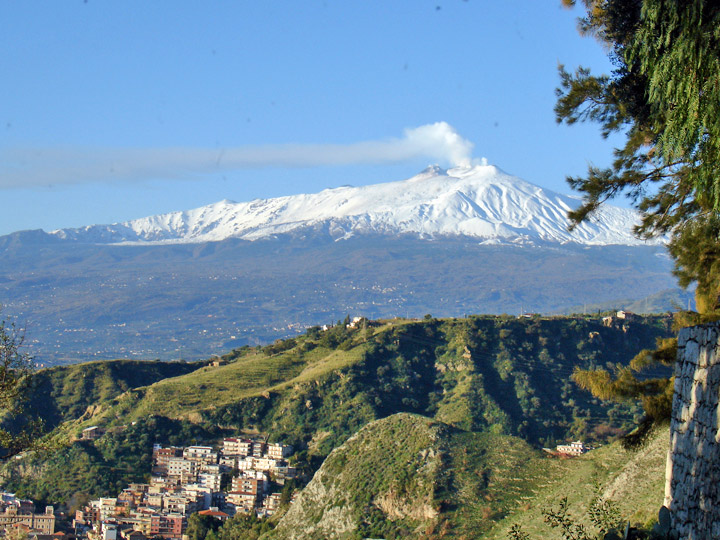
as seen from Taormina
The first recorded eruption of Mount Etna occurred in the 18th century BC,
although geological studies show that it was active before that period. Since
then about 90 recorded eruptions have occurred, the most disastrous of which
were in AD 1169, when the town of Catania was destroyed with a loss of 15,000
lives, and in 1669, when more than 20,000 people perished. In 1928 two villages
were almost completely buried by a flow of lava and in 1947 two new craters were
formed by renewed activity of the volcano. Eruptions also occurred in 1971,
1981, 1983, and 1992.
Text from Microsoft Encarta
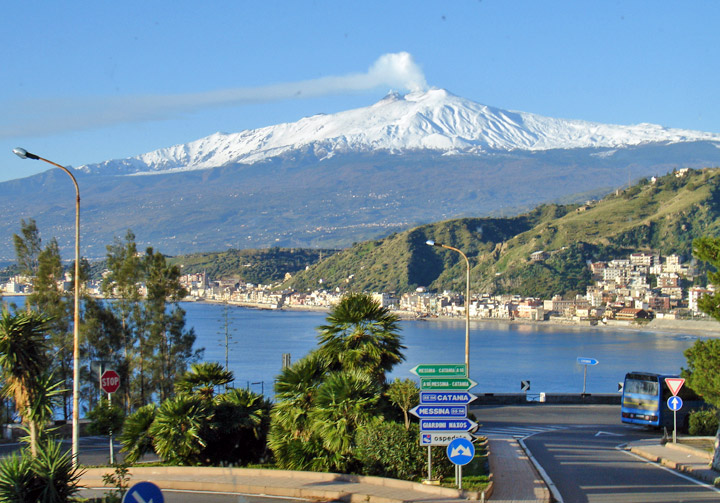
View from Taormina showing Giardini-Naxos on the shoreline
Telephoto images

the smoking peak
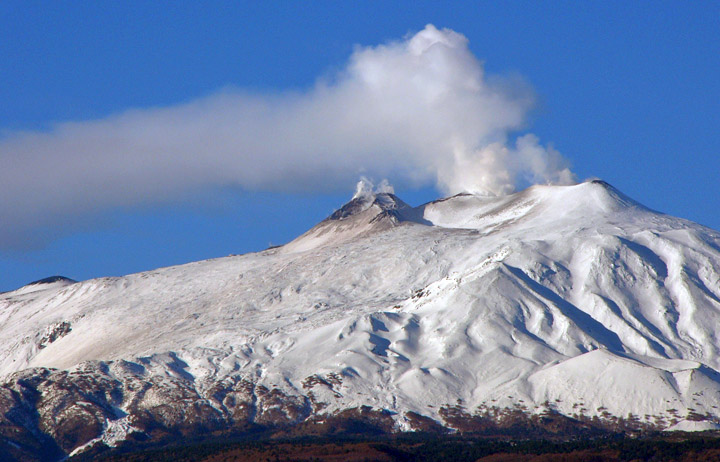

top cinder cones
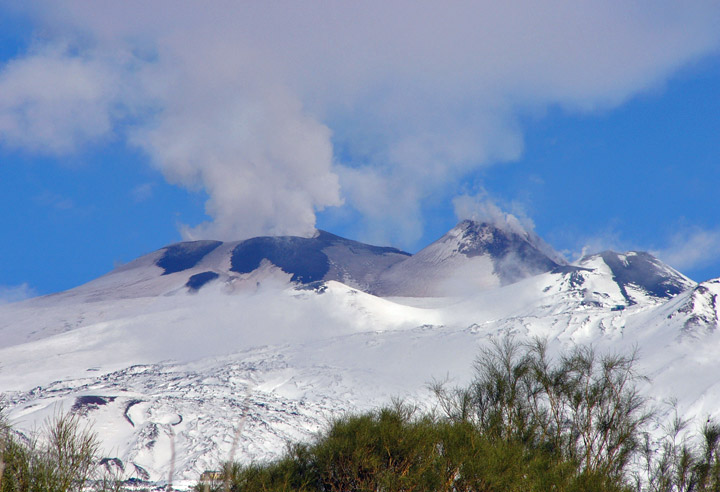
climbing to the top
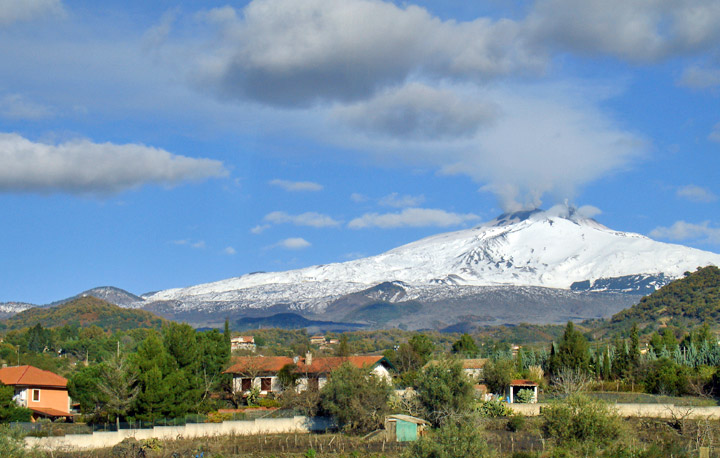
often threatened village in the foreground
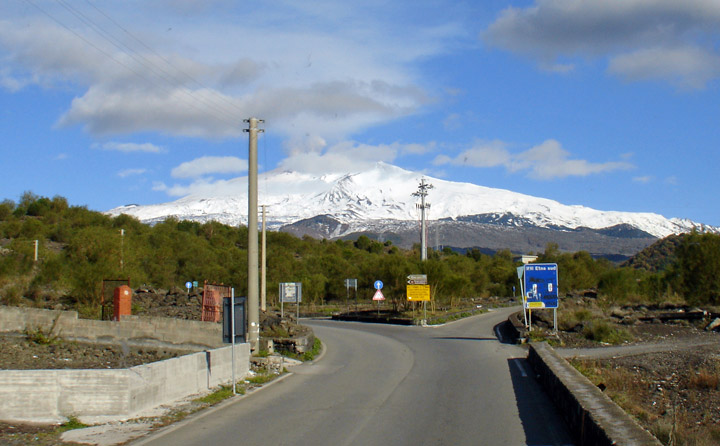
climbing the road to the upper heights
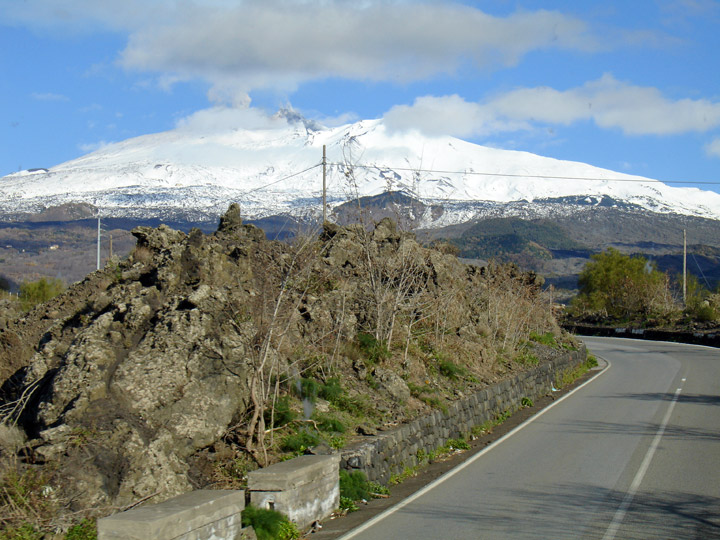
road cut through an old lava flow
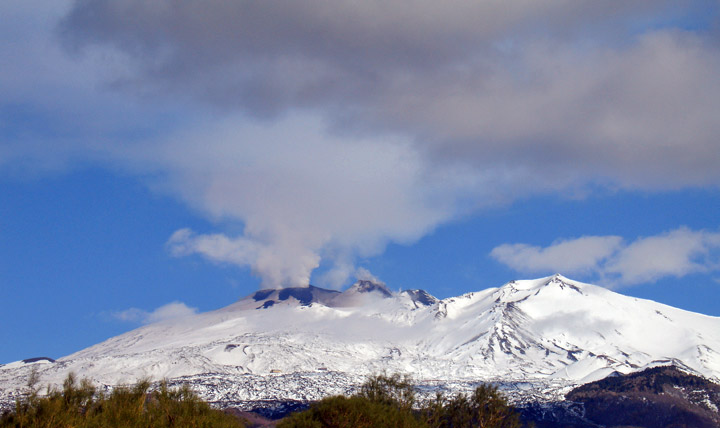
view of the top cinder cones and peak
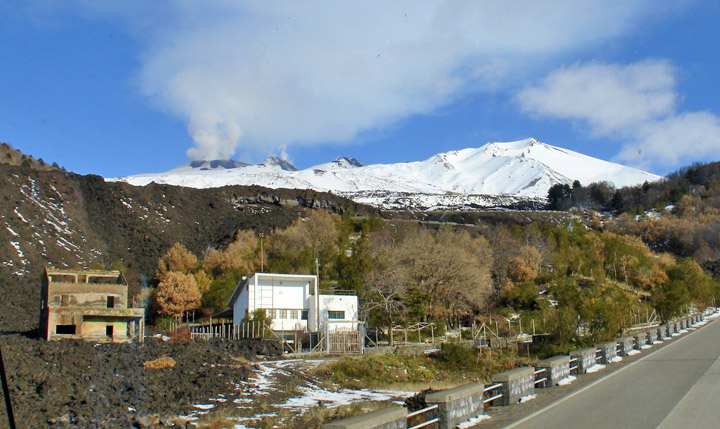
house on the left destroyed by the lava flow
then built the new one on the right
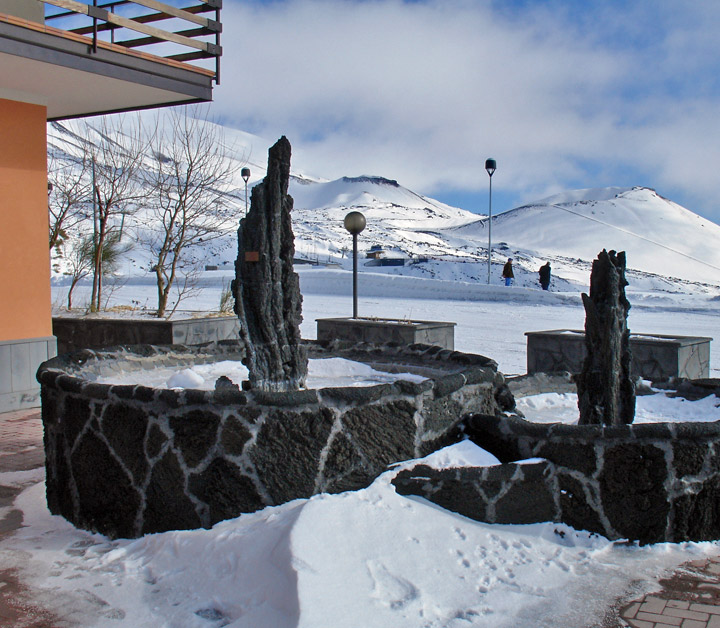
"lava trees" on the patio of the restaurant
cinder cones in the background

buildings at the lift to the top
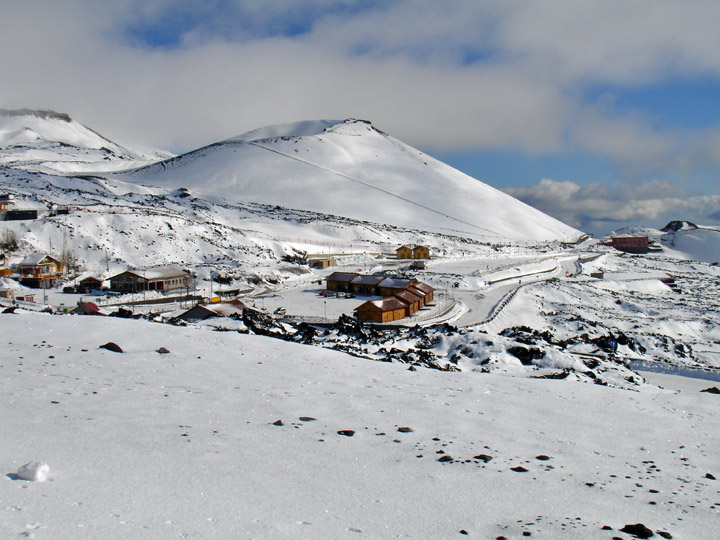
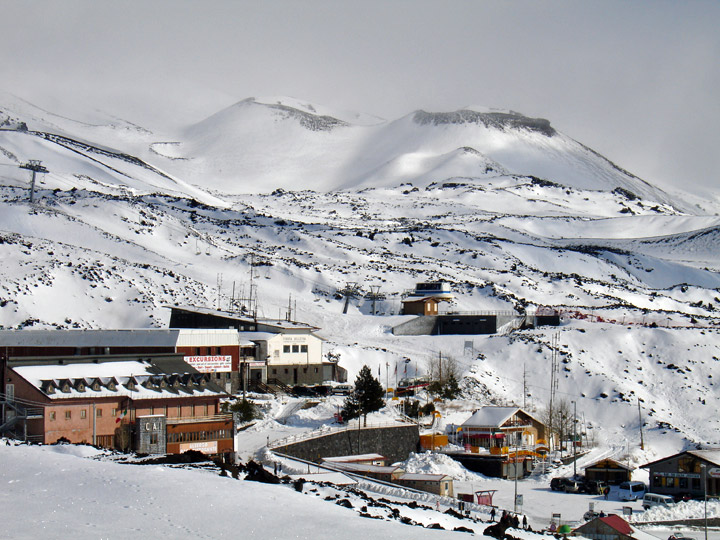
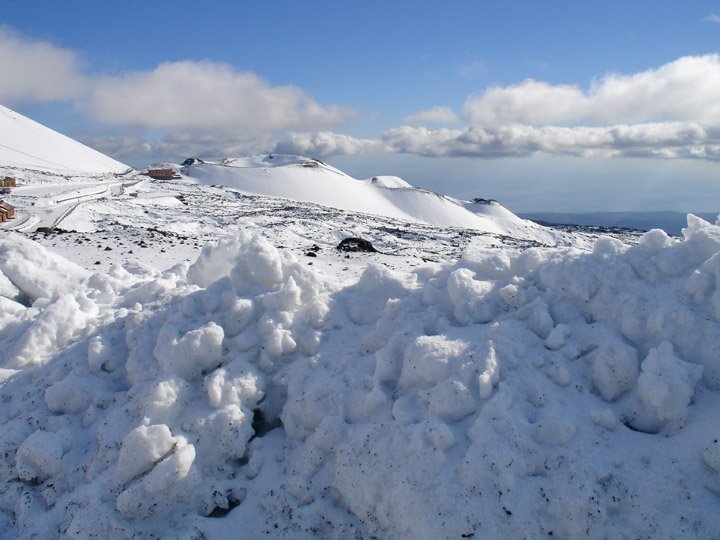
a side dormant cinder cone
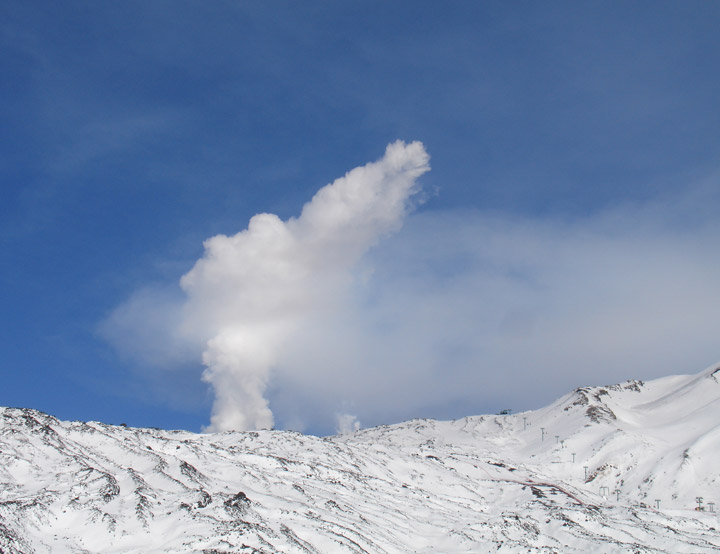
steam from a vent
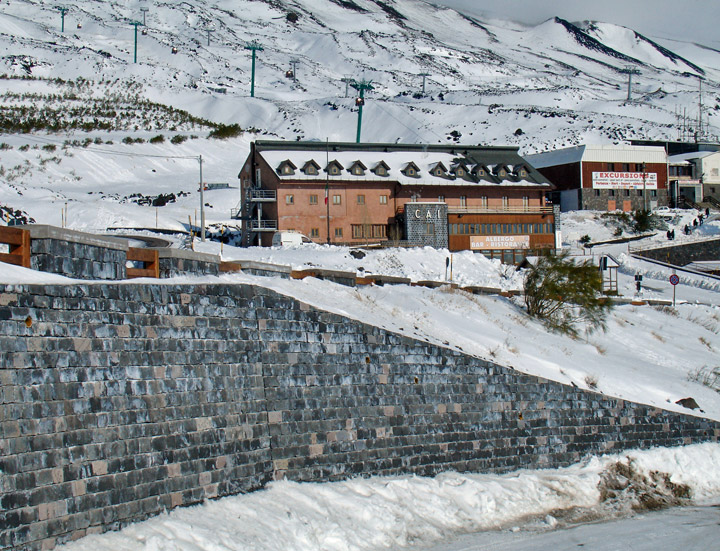
at the lift
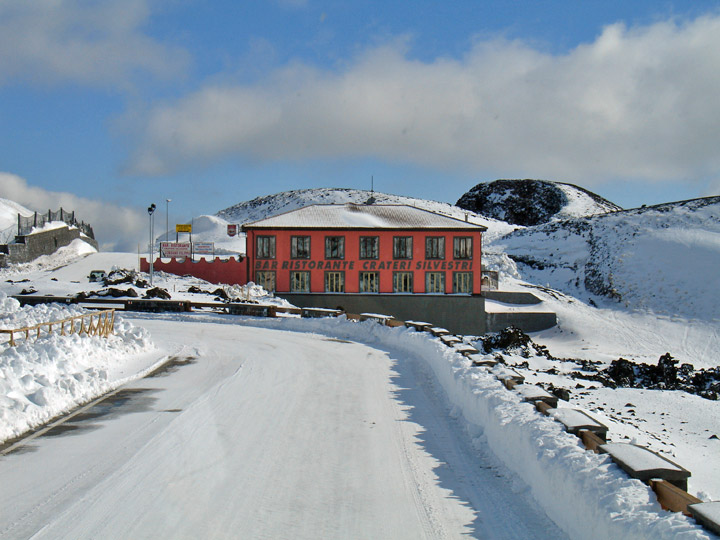
restaurant
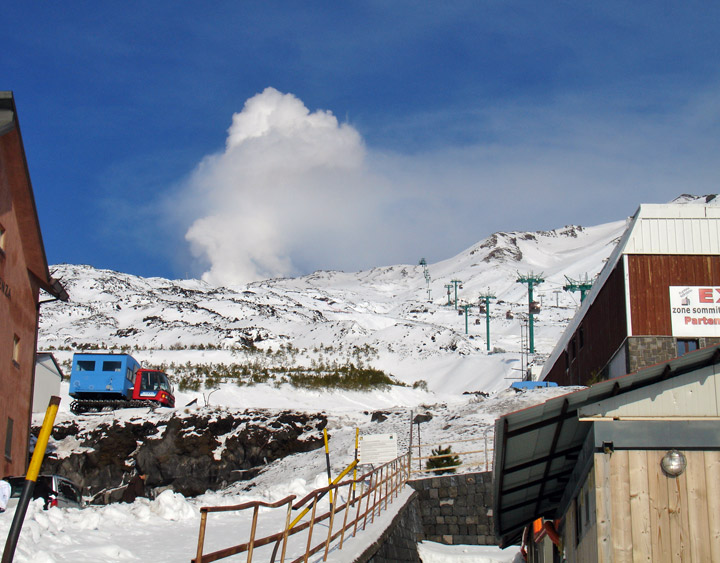
an expensive ride to the upper level
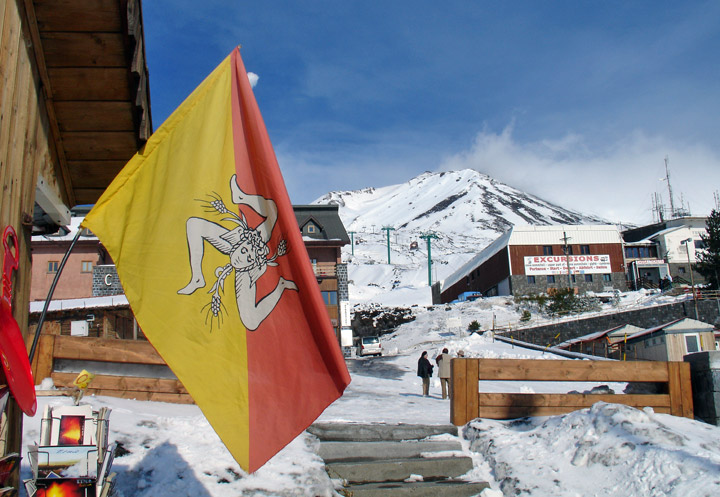
Photos from 1976
